Goodman Games’ Original Adventures Reincarnated—An Interview with Chris Doyle
If you’re a Dungeons & Dragons player unfamiliar with Goodman Games’ Original Adventures Reincarnated (OAR) series, you don’t know what you’re missing. I must admit I knew nothing about this series of D&D adventures until Goodman Games released the sixth book in the series, The Temple of Elemental Evil. If that name sounds familiar, it should. It is based on the highly popular original adventure of the same name first released by TSR in 1985.
There are plenty of third-party D&D adventures out there, but I must confess I used to be one of those DMs who only bought “official” adventures—i.e., adventures published by TSR/Wizards of the Coast (WoTC). I was aware, of course, of websites like DrivethruRPG and Dungeon Masters Guild that sold third-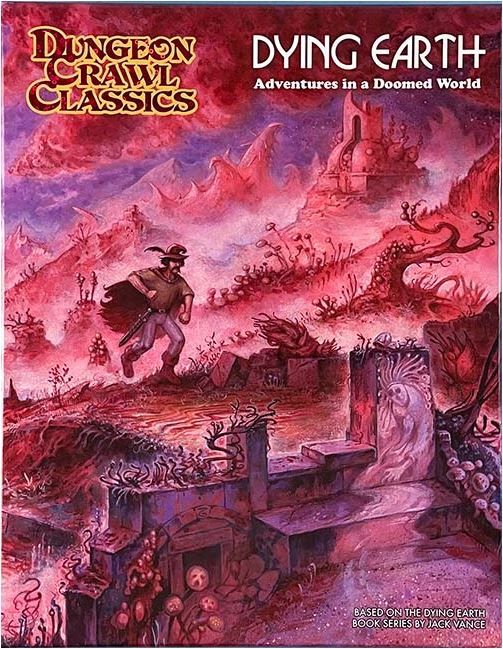 party adventures, but I had never given them much thought.
party adventures, but I had never given them much thought.
The handsome slipcase of Goodman Games’ reincarnated version of The Temple of Elemental Evil was what drove me to take a look at third party adventures. During a visit of my local gaming store, I couldn’t miss it: The bold, circa 1977 Basic D&D font on the thick spine made the two-volume slipcase stand out from the other books on the shelf. My interest was piqued. The 2-volume slipcase was HUGE, and at 700+ pages it weighed a ton… that’s a lot of D&D for the price! I couldn’t resist it. It hit me as I waited in line at the cash: this book was bringing a lot more to the game than a typical D&D adventure. Dungeons & Dragons 5e is (arguably) the most popular edition so far. It ushered in a renaissance of the game, and it is still attracting new players ten years after its launch. However, a lot of players are still playing older editions of the game, from the original boxed edition (affectionately known as BECMI—for the Basic, Expect, Companion, Master and Immortal Boxed Sets) to 1st through 4th edition. If, like me, you still like to play older editions as well as 5e, these books give you the option to relive those classic adventures not only in their original form, but also under 5e rules.
The idea of updating older adventures to a later edition is not new. WOTC took a stab at it with the release of Tales from the Yawning Portal in 2017. Also, current 5e adventures such as Tomb of Annihilation and Curse of Strahd are, after all, updated versions of adventures from previous editions of the game.
And when it comes to playing old adventures using original rules, used copies and reprints of those adventures are still available. So, what is the appeal of Goodman Games’ Original Adventures Reincarnated? It’s a number of things, really. First, they bring together, in one (or two) books, the original adventure AND its 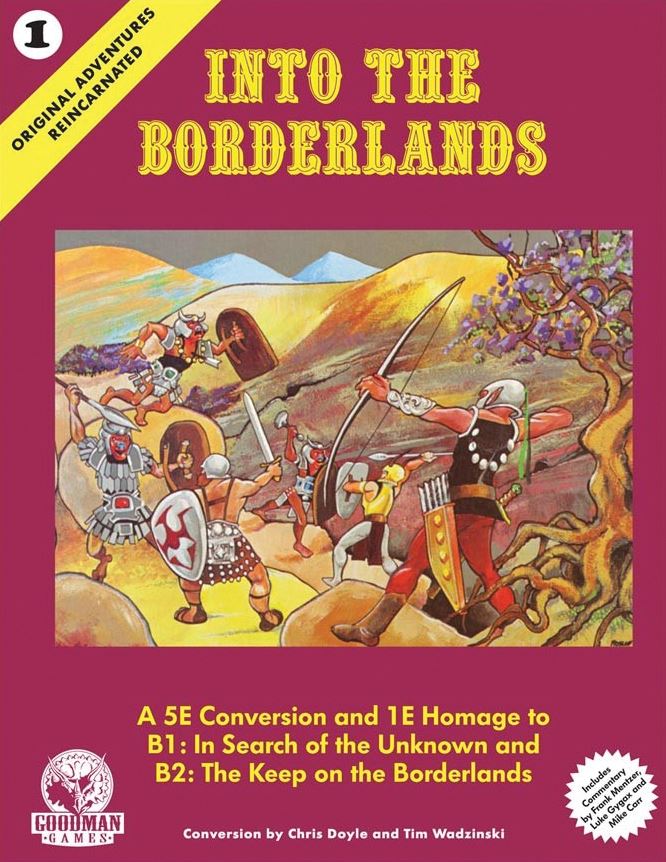 updated version for 5e.
updated version for 5e.
Second, Goodman Games did its homework. The reason the books are such hefty volumes is that they include several editions of the original adventures. The designers over at Goodman Games can rub shoulders with top D&D historians any day. Many older adventures went through several print runs, and changes were often brought to the adventures when they were reprinted. Goodman Games stayed on top of these changes. Every book that features several versions of the adventures also includes an exhaustive list of the changes made from one edition to the next. These details might fly over the head of casual gamers, but for those gamers who are just as much D&D historians or scholars, those details matter. The volumes also include a fair amount of new material, from additional dungeon levels and encounters to new art by D&D luminaries such as Erol Otus. The Original Adventures Reincarnated series therefore delivers more than just the chance to revisit these old adventures.
Sometime this fall or early winter, following a very successful Kickstarter campaign, Goodman Games will release the 7th volume in the series, Dark Tower. Based on the 1979 classic adventure, Dark Tower is a departure for Original Adventures Reincarnated since it’s the first adventure in the series not based on a TSR adventure. While fans are waiting for this book to hit the shelves at their local gaming store, we sat down with Goodman Games’ Chris Doyle to talk about this upcoming book and the Original Adventures Reincarnated series as a whole.
Chris Doyle was playing role-playing games in the early ’80s, long before they became cool. He started freelance writing for the game industry in the early ’90s. He has published material for TSR, Wizards of the Coast, West End Games and Atlas Games. He joined Goodman Games in 2004 as a freelancer, initially working on the original, third edition Dungeon Crawl Classics line of adventures. He joined the company full time in 2020. Presently, as Director of 5e Development and Design, he has been involved on many levels with the development of the OAR series. He was project lead and handled all 5e conversions for OAR #1, #2, #4, and #7. For OAR #6, he was the project lead and worked with a team of other designers while handling about 50% of the conversion himself.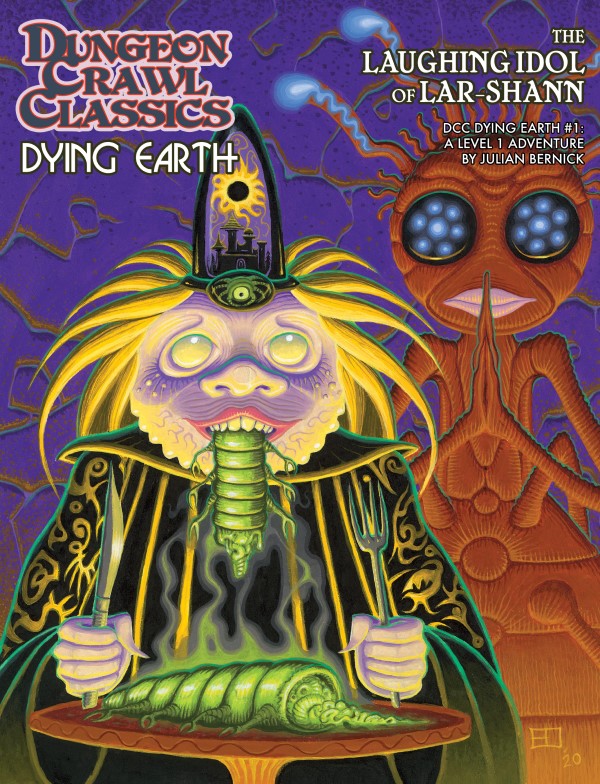
NKG : Good morning, Chris. Thank you so much for agreeing to this interview. I know you guys must be busy with the release of Dark Tower getting closer.
CD : We actually really like it when folks reach out and want to interview us and learn a little bit more. Peek behind the curtain kind of thing. And Joseph Goodman, the owner of Goodman Games, really encourages us to put ourselves out there and make ourselves available at conventions and for interviews.
NKG : I have to make a confession: I used to be one of these players that only bought TSR/WOTC adventures. I never bought third party adventures until your Temple of Elemental Evil slipcase caught my attention.
CD : Actually, we get that at conventions all the time. People will be standing at our booth and they’ll just be amazed at the OAR books. And then they’ll be like, “wait! This is not the Wizards of the coast booth. Who are you guys? What are you doing? And how are you able to do this?” So, we get this all the time. And there’s something to be said for seeing that old artwork on a shelf of a game store somewhere and just being drawn into it and saying, “wait, what is this?”
NKG : Every D&D player who comes to my house and sees these books on my shelf wants to pull them down. Players ask, “what’s this?” And I answer, “These are our next adventures.” And the great thing is, we can play them using their original rules or fifth edition rules. And that’s going to lead into my first question: Where did you get the idea to take those original games and give them a new life?
CD : Because they’re hard to find. Now, you can go on eBay and find them. You can pay $300 for a good copy of Temple of Elemental Evil, but they’re hard to find, and it’s not for everybody’s budget. So, you make them accessible in the original edition, but also with the added idea of upgrading them to fifth edition, which is a 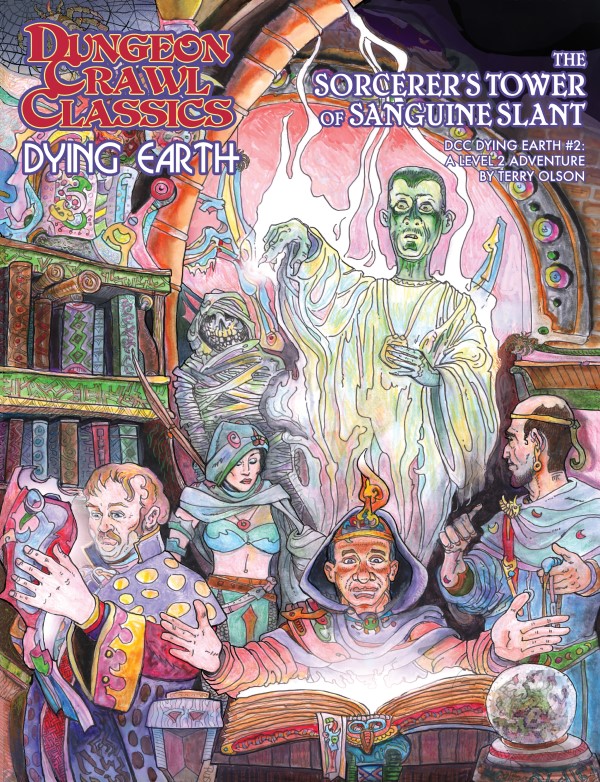 brilliant idea. How did that happen at Goodman Games? That was all Joseph Goodman. That was all his idea. And he really liked the idea of reprinting the originals in their first edition glory, warts and all, and then also updating them to the most recent rule set, so we can bring it forward to the modern gamer.
brilliant idea. How did that happen at Goodman Games? That was all Joseph Goodman. That was all his idea. And he really liked the idea of reprinting the originals in their first edition glory, warts and all, and then also updating them to the most recent rule set, so we can bring it forward to the modern gamer.
NKG : Why did you choose Keep on the Borderland as the first book in the series?
CD : So, a little secret there: That was not our first choice. We had a first choice, and we would give a list to Wizards of the Coast once they gave us the license, and then they would come back and say no or yes.
Keep on the Borderlands was high on our list. It is considered to be the most widely available old school adventure because it was in that Basic D&D Boxed Set that sold millions of copies, I think, or hundreds of thousands. So, when our first choice was not available that was a pretty easy second choice because of its wide availability. Also, in 2004, Dungeon magazine did a top 30 of all-time list of adventure modules. Keep on the Borderlands was on that list. We used that list basically to help us define the OAR line. And then we asked very nicely if we could also include B1 (In Search of the Unknown), and kind of make it a combination. And Wizards of the coast said, “yes! You can certainly do that.” So we kind of got a two for one out of that deal. That’s right: it is actually two adventure modules.
It’s B1 and B2, which were not officially in the same sandbox. They kind of hinted that they were both near each other. The wilderness map shows an area that looks like it could certainly be the B1 dungeon, but they don’t actually say that. We leaned into that a little bit heavier and kind of created a sandbox out of it and actually set the B1 dungeon not too far from the Caves of Chaos. So you can actually go and explore both of those sites.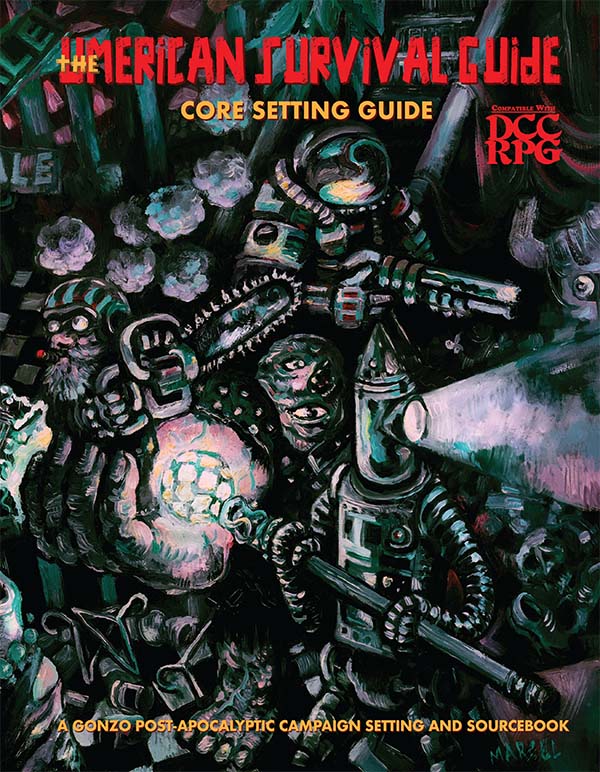
NKG : Based on the feedback you’re getting, are the books appealing more to old-school players or to new players?
CD: You’re getting specifically those old-school players who just want the first edition printing. And then you’ve got the newer gamers. So, you have a lot of people, millions of people have come into the hobby in 2014, 15 and 16, and even just a couple of years ago, and they’re just discovering these adventures for the very first time.
They’re not like us, and they didn’t have the originals. So, this is the perfect sweet spot for them to enjoy a classic adventure. But like I said, kind of updated for the modern sensibilities, and it’s very approachable and understandable for the modern gamer.
So, I would say both. It hits a really nice sweet spot. I think we weren’t really sure when we first went about doing this which sector of the market was going to like them more, but I think it’s really beloved by both.
NKG : Let’s talk about front matter for a while. I’m the kind who reads all that stuff. Some people just skip over that. But there’s a treasure throve of lore and history about TSR and about how these adventures came to be in the first few pages of those books. What was the driving idea behind them? How much work went into those features? And which one is your favorite?
CD: That was really kind of Joe Goodman’s vision of the product. Like he said, if we’re going to do this, we’re going to do it our way, and we’re going to do it right. Fortunately, we have a lot of contacts with a lot of the old school folks that produced these original adventures.
A big part of that is we’re very active, and we have a booth at Gary Con and North Texas Con. These are two of the biggest old school conventions that really attract a lot of the old guard. So, over the years, we’ve been able to create relationships with them. I won’t say it’s an easy task, but when we come around to doing  a product like this, we can look and see who were the original designers. Oh, Harold Johnson. Well … even if we don’t know Harold Johnson specifically, we probably know somebody who knows Harold Johnson. Or we can just walk up to him at Gary Con and say, “hey, we’re working on this project. This is what it’s all about. We’d like to either interview you or have you write an essay or something about your experiences with the adventure.” And almost all the time they adore the projects, and they’re very willing to do it.
a product like this, we can look and see who were the original designers. Oh, Harold Johnson. Well … even if we don’t know Harold Johnson specifically, we probably know somebody who knows Harold Johnson. Or we can just walk up to him at Gary Con and say, “hey, we’re working on this project. This is what it’s all about. We’d like to either interview you or have you write an essay or something about your experiences with the adventure.” And almost all the time they adore the projects, and they’re very willing to do it.
We sent one of our editors, Tim Wadzinski, who’s worked on most of the books, he actually travelled back up to Lake Geneva to meet with Harold Johnson and did an entire interview with him. Harold talked about DragonLance and a lot of things that were not part [of the book], but we loved the content so much, we just kept it all. We didn’t want to take any of it out because it was old school gold right there.
But my favorite, probably because I had to work the hardest to pull this one off, [was] Dark Tower. We have an essay by John D. Rateliff. He’s a Tolkien scholar, and he’s not been in the game industry for, I think, a couple of decades now, or maybe at least ten years. I just hunted around on the Internet and eventually found an email address for him. I reached out to him and explained what we were doing. It took a little bit of convincing, but he finally agreed to write a nice little essay for Dark Tower, which is OAR #7 coming out soon. John Rateliff was one of the loud voices in the room that really pushed hard to get Dark Tower on that list [of the 30 best D&D adventures]. So, we were just really excited that we were able to bring this full circle and have him write an essay about Dark Tower.
NKG: There’s a lot of third-party material out there now. What do you think makes this series stand out from the other stuff?
CD: I think a lot of it has to do with our art style. We really kind of lean heavily into that old-school art, the black and white ink art that you’re very fond with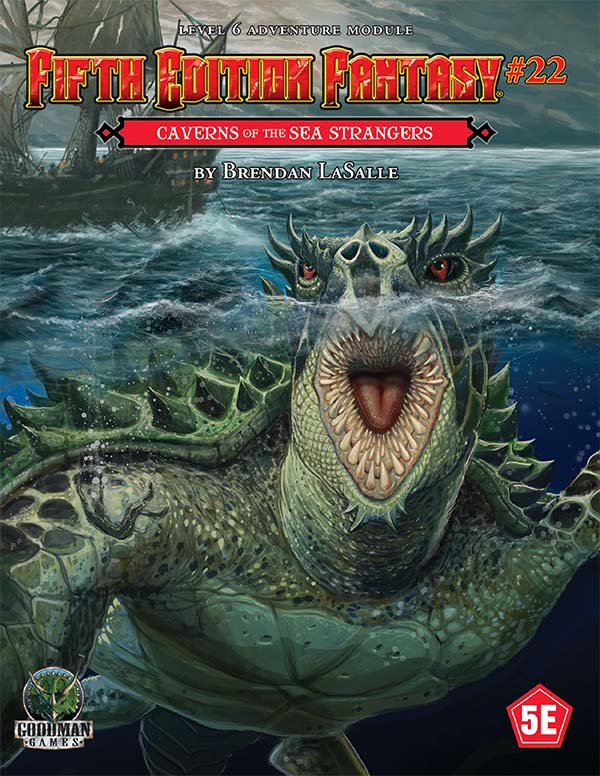 from the first edition books. I think that’s a big part of it.
from the first edition books. I think that’s a big part of it.
I think we’ve established ourselves as a brand. People know that when we put a book out that we really take our time. We really make these into an homage. We make them books that you’re going to be proud to read, including the essays. So, we do all those things. We kind of really go above and beyond. And I think people just kind of come to expect that from Goodman Games.
NKG: Let’s talk about Temple of elemental evil. It’s the first one you published as a slipcase. Take me through the process. What made you decide to go all out on this one?
CD: The original Temple of Elemental Evil was 128 pages long. And then, of course, before that, there was the publication of The Village of Hommlet, which was another 32 pages long. So, that alone made it a bigger book. And we knew going in that this was going to be the biggest one we had ever done.
So, we kind of figured going into this, especially with the reprints of the originals, that it was going to be a hefty book. Another thing that Joe Goodman has learned over the years: once you start getting to a certain page count, it’s actually better to do two smaller books to kind of preserve the binding, as opposed to doing one 600-page book.
So, he said, let’s do a slip cover, and let’s make it truly an amazing addition [to the series]. So we leaned in a little bit harder on the essays. We made the essays a little bit longer. We added more of the essays to really kind of give you some bang for your buck.
And then, as you know, we always create additional material for these adventures. So a very natural point to creating additional material for Temple of Elemental Evil  was the elemental nodes. If you’re not familiar with the adventure, you’ve got four levels of the dungeon, two villages, a wilderness, and then once you get to the bottom level of the dungeon, there are these four elemental mini planes, one each for fire, air, water, and Earth.
was the elemental nodes. If you’re not familiar with the adventure, you’ve got four levels of the dungeon, two villages, a wilderness, and then once you get to the bottom level of the dungeon, there are these four elemental mini planes, one each for fire, air, water, and Earth.
But in the original adventure, they were literally just a map. Each [node] was mapped out, and then they gave an outline of the monsters, and a couple of notes on treasure. So, we took each of those maps, and we fleshed them out completely. That added quite a bit of content to the adventure. I think we ended up adding close to 50,000 words of new content. So, we kept true to Gary Gygax’s original process. And what’s really nice about those [nodes] is you can play them at a convention. You can do those as one-shots. I mean, they’re their own little packets. You don’t have to play all four levels of the dungeon if you don’t want to. You can just throw the adventurers in the fire elemental, and you’ve got a couple of sessions’ worth of adventuring in a quasi-fire elemental plane.
NKG: That must be a dream come true for a designer to be able to go back to a classic and add to it. But is it also intimidating at first?
CD: I would say yes, it’s intimidating, but, it’s also thrilling. It’s not easy because you need to get somebody to really channel their old school feeling. Sometimes, especially some of the more modern game designers, they don’t necessarily have those design chops. They kind of design things more like typical adventures are designed, not like the ones today.
So, we really look for writers that really have a strong foothold in the old school that played these adventures and know what the Caves of Chaos are. And then we say, we want more Cave of Chaos. But it really needs to feel like the Caves. There needs to be a storeroom with barrels and crates, and there needs to be some sort of a humanoid war of its neighbors or something like that.
NKG: Did you need special permission from WOTC to add things in? And if so, how hard was it to get approval for something like that?
CD: They approved everything, but for the most part, they did not have a heavy hand on these. They pretty much let us do what we wanted to do. We submitted everything afterwards for approval. In general, they were like, “yes, good.” They’d always come back with a couple of little tweaks here and there, but nothing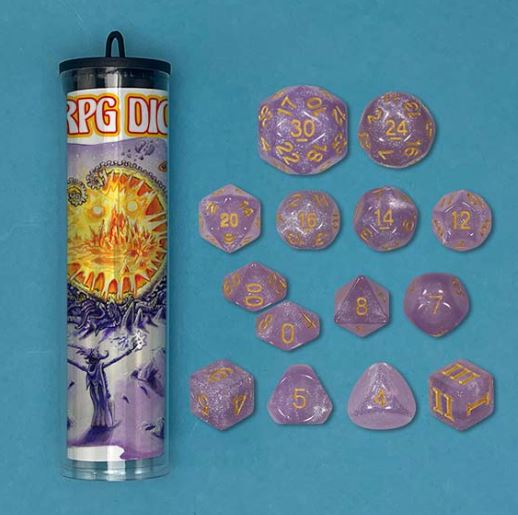 major.
major.
With the Caves of Chaos, we just added another cave, another different type of humanoid that was kind of battling with the other humanoids. A lot of times it does lend themselves to exactly what you’re going to do.
The Lost City [OAR #4] had a great dungeon. The top of the dungeon was fully designed. The lower five levels were just an outline. Underneath those five levels were all these catacombs. I had so much fun designing all of that material. And quite frankly, that was the reason we picked that adventure, because it was so ripe for expansion and fleshing out and basically finishing the design that was started 40 years ago.
NKG: There’s plenty of new art in there as well. My favorite, is in Expedition to the Barrier Peaks. I opened it up and I saw that brand new endpage by Erol Otus…
Again, this all comes back to us having relationships with these amazing old school artists, and again, because we run into them at conventions.
A couple of months ago, we actually had a staff retreat and one of the activities we did was we went and saw Conan the Barbarian in a movie theater. And Erol joined us because it was basically in his backyard. It makes it pretty easy when you have that interaction with them and that long-term relationship. Erol Otus, I  remember him hanging out at the Goodman Games booth like 20 years ago when we were first getting started.
remember him hanging out at the Goodman Games booth like 20 years ago when we were first getting started.
It’s just amazing to blend some of their art in with some of these amazing new artists that we have, but also with the old-school feel of the adventures. You open the book and you see this brand new art by an original D&D artist.
NKG: Which one is your favorite, or which one represented the greatest challenge for your team so far?
I think The Lost City is the one I love the most. Part of that is because there was just so much opportunity to play and make it my own; kind of really finish it off. So I think that one is definitely my favorite adventure. And then the one that was the most challenging: Well, the first one was tricky to get started because this project came to me, and we hadn’t done it before, so there was a lot of “how are we going to do this,” and “what are we going to do,” and “how am I going to do the conversion and everything?”
It took a little while to get going, but by far the most challenging was Temple of Elemental Evil, simply because of the size of the project. I was still just a freelance writer at that point, and I had a very intensive job where I would not work just a 40-hour week. I was usually working 60 hours a week in the field, travelling. So I was literally doing the conversion work for Temple of Elemental Evil on the side. That’s why it took so long. And then we also brought in a team of writers. It was a challenge to get everybody moving in the right direction.
NKG: What was the process behind printing several editions of the adventures? How did you decide which ones to print?
CD: We have some people that are amazing at this, that just know these adventures much better than I know them. I’m not into all these printings, and I have one copy of these old adventures, maybe two. We look for printings that are different. For B2 [Into the Bordelands], we did a whole essay on some of the differences.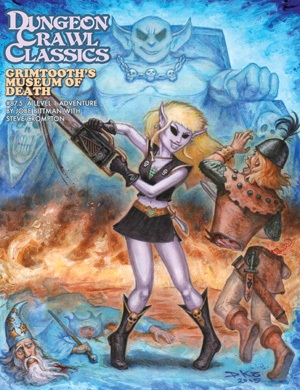
We do look for some that are kind of different. We have a relationship with John Peterson, the noted RPG/D&D historian. He’s helped us out. As a matter of fact, some of those original maps and drawings that we had from Gygax and Arneson [from Temple of Elemental Evil]—I believe those were from his collection. Or he knows who owns those, and I believe he is the one that actually obtained those scans for us.
NKG: What do you have in store for Dark Tower?
We have three books this time. The first volume includes a collection of essays. I think there are five or six essays. Then there’s a complete reprint of the first edition of Dark Tower. So, that book is going to be about 120 pages long. The second volume of the book is the fifth edition conversion of the original Dark Tower. We also expanded some of the material there.
There was a map called the Red Moon Pass; there were some locations that were never really detailed in the wilderness. So we fleshed those out and detailed them. We added a couple of extras. We added a whole new dungeon. We created a whole region and set Dark Tower in it. You can actually explore beyond the Red Moon Pass and the village of Mitra’s Fist.
We have the full 5e conversion of all four levels of Dark Tower, plus the White Tower of Mitra and the Dark Tower of Set that will keep your adventurers busy for literally months and months and months.
There’s a lot of material there, but we didn’t stop there. Then we took a cool part about Dark Tower: the Sons of Set; Set is the big bad guy. He’s a serpentine deity, 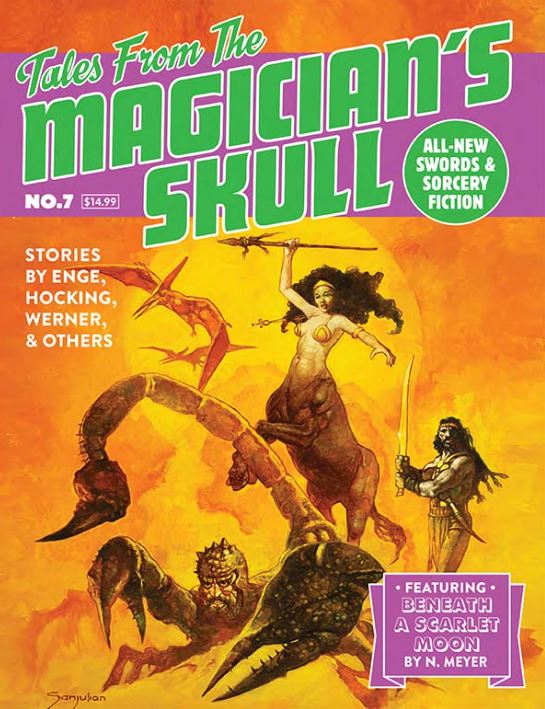 and he creates these twisted mockeries, these demonic foes, and there are all these wonderful random tables where you can determine what they look like and what their special abilities are.
and he creates these twisted mockeries, these demonic foes, and there are all these wonderful random tables where you can determine what they look like and what their special abilities are.
So, every son of Set is completely different. And then there’s four chosen sons of Set. These are the ones that are much more powerful. And in the original Dark Tower, there was one chosen son of Set that the adventurers got to defeat in battle.
We love that concept so much. It’s so much fun that we decided to do a trilogy of adventures. And with three additional adventures and three chosen Sons of Set that had not been detailed yet, we basically commissioned freelance writers to design an adventure based on their own original design for a chosen son of Set.
We basically detailed all four chosen sons of Set and all their allies, and then we set those adventures in the regional map that we created around Dark Tower. You can go all over the place and continue your Dark Tower adventures, track down the Chosen sons of Set and bring them all to justice to kind of really bring closure to your campaign.
These are pretty high-level adventures at this point. These adventures are designed for 12th- to 14th-level characters. We had a lot of fun with that, and it was great to bring in some freelance writers to get some fresh perspective.
What’s also amazing about OAR #7 is we will have PDFs. We will have VTT support available for this. And not only do we have the fifth edition rule set, we also have the DCC Rule set of Dark Tower too. So we’re very excited to be able to bring all of those things to the fans.
NKG: Please tell me it’s not the last book in this series…
We’ve announced our next OAR book: Grimtooth’s Traps, which will be OAR #8. Caverns of Thracia will be OAR #9. We are currently working on OAR # 10.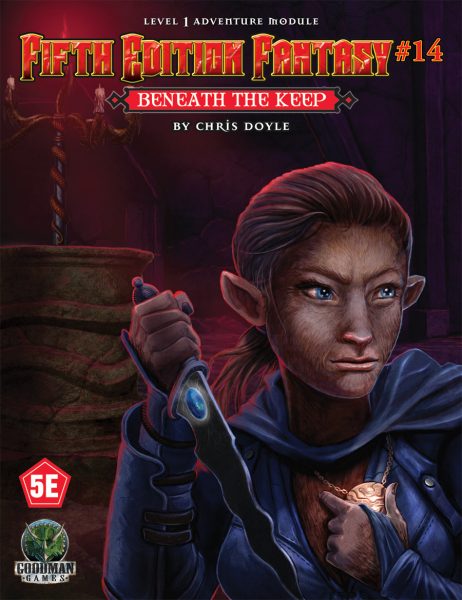
NKG: Are you done with TSR/WOTC at this point, or are you planning for more?
No, we’re not done with that list. The list is not as large as it was because we’ve already done six of the classic TSR adventures. Several of them have already been published by Wizards of the Coast. But we are very open to revisiting some of the classic TSR adventures.
These are negotiations that go back and forth between Goodman Games and Wizards of the Coast. I’m guessing that Wizards of the coast is a little bit busy with their new edition of D&D right now, and they’re just not interested in engaging in third-party content right now. But we’re very hopeful that once they’ve released their new edition that they will be very open to doing more of these, because we would love to do them here at Goodman Games.
